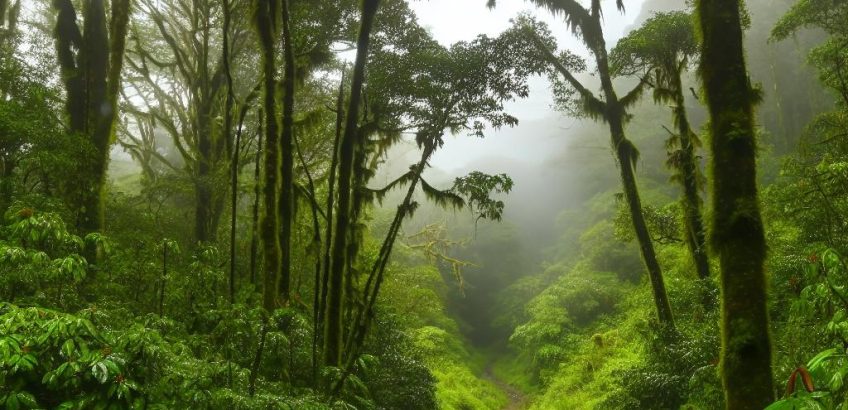
Exploring the cloud forests of Monteverde, Costa Rica
Introduction to Monteverde’s Cloud Forests
Monteverde, situated in the spectacular landscape of Costa Rica, is celebrated for its untouched cloud forests. These forests offer an unparalleled experience, portraying an ecosystem where clouds play an integral role in shaping the habitat. With an elevation of approximately 1,440 meters, Monteverde’s cloud forests are a sanctuary for a remarkable diversity of species. This makes it an invaluable site for both scientific exploration and ecotourism.
Geography and Climate
The unique climate conditions of Monteverde are a direct result of its exceptional geographical setting. Moist air flowing from the Atlantic Ocean encounters the mountainous terrain, leading to a nearly constant cover of clouds. This persistent mist created by this geographical convergence is pivotal for the ecosystem. It supplies the necessary moisture required by numerous species of plants and animals that are exclusively found in this habitat.
Flora
Within the mystical expanse of Monteverde’s cloud forests lies an impressive collection of over 2,500 plant species. Among these are various mosses, breathtaking orchids, and spectacular bromeliads. The enduring presence of cloud cover, coupled with the high humidity, fosters a perfect environment for the proliferation of epiphytes. These are plants that reside on other plants rather than anchoring themselves in the ground. A noteworthy plant species amidst this lush assemblage is the epiphytic fern, thriving magnificently in such humid conditions.
Fauna
The vibrant tapestry of life within Monteverde’s cloud forests is not limited to its plant life; it extends robustly to its fauna. The area hosts more than 400 bird species, including the magnificent resplendent quetzal. This bird is not only a favorite amongst birdwatchers but also a subject of intense study for researchers. The cloud forest also offers refuge to a diverse array of mammals, reptiles, and amphibians. Among these are amphibian species that are exclusively native to this region, like the golden toad, which now faces the brink of extinction.
Conservation Efforts
Given its abundant biodiversity and significant ecological value, Monteverde has become a crucial zone for conservation activities. Various initiatives are focused on safeguarding and nurturing the delicate dynamics present within the cloud forest ecosystem. The creation of protected areas such as the Monteverde Cloud Forest Reserve is an essential part of these efforts. These reserves are instrumental in reducing the anthropogenic pressures and mitigating climate change effects while fostering opportunities for learning and scientific inquiry.
Importance of Ecotourism
Ecotourism plays an indispensable role in supporting conservation efforts in Monteverde. By bolstering the local economy and increasing awareness about the necessity of preserving these natural havens, ecotourism acts as a bridge between nature and humanity. Visitors have the opportunity to engage in a range of activities such as guided nature walks, bird watching, and canopy tours. These activities are specifically designed to ensure minimal environmental impact, allowing the forests to be enjoyed in a sustainable manner.
Challenges and Future Prospects
Despite continuous conservation attempts, Monteverde’s cloud forests are not without challenges. Climate change poses one of the most substantive threats, potentially disturbing the delicate equilibrium of these ecosystems. Rising temperatures and shifting precipitation patterns could lead to a decline in the crucial cloud cover needed for the forest’s survival. In response to these challenges, ongoing research and the implementation of adaptive management strategies are vital. These efforts are focused on ensuring that Monteverde’s unique cloud forests continue to flourish into the future.
For those interested in visiting Monteverde and delving into the wonders of its cloud forests, consider exploring resources such as Monteverde Nature Tours. Here, you can plan your trip while actively supporting practices in sustainable tourism.
Conclusion
Monteverde’s cloud forests stand as a testament to the richness of biodiversity and the intricate balance inherent in natural ecosystems. Although there are obstacles to overcome, the persistent efforts in conservation and the practice of responsible ecotourism offer a positive outlook for the continuation of this extraordinary environment. As these initiatives progress, they pave the way for a sustainable future in which both nature and humanity can coexist harmoniously.
